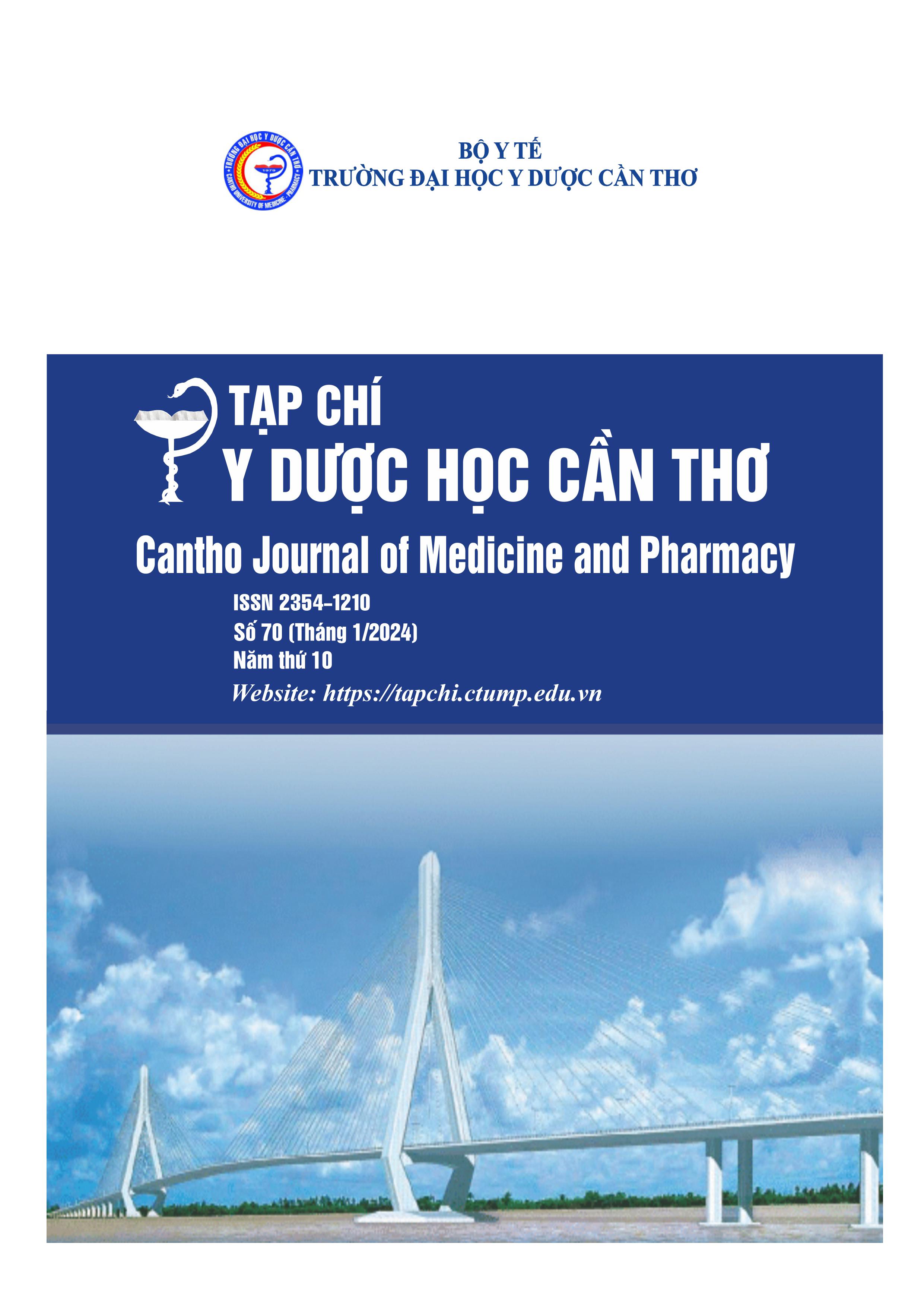RESEARCH ON CLINICAL AND PARA-CLINICAL CHARACTERISTICS AND EVALUATION OF TREATMENT RESULTS IN PATIENTS WITH CEREBRAL INFARCTION WITH ATRIAL FIBRILLATION AT CAN THO CENTRAL GENERAL HOSPITAL IN 2023-2024
Main Article Content
Abstract
Background: Atrial fibrillation is identified as an important risk factor for cerebral infarction, increasing the risk of cerebral infarction by 5 times. Cerebral infarction occurring in patients with atrial fibrillation is often more severe, with higher complication rates, mortality rates, and risk of severe disability. Objectives: 1). To survey on clinical and paraclinical characteristics in patients with cerebral infarction and atrial fibrillation at Can Tho Central General Hospital in 2023-2024; 2). To evaluate the results of in-hospital treatment in patients with cerebral infarction and atrial fibrillation at Can Tho Central General Hospital in 2023-2024. Materials and methods: A cross-sectional descriptive study was conducted on 35 patients diagnosed with cerebral infarction and atrial fibrillation treated at Can Tho Central General Hospital in 2023-2024. Results: Most patients were ≥ 70 years old and female accounted for 57.10%. Regarding clinical characteristics, the main symptoms included hemiplegia (74.3%) and language disorders (68.6%). Regarding paraclinical characteristics, middle cerebral artery damage accounted for 91.42%. The results of treatment according to the mRS scale at the time of discharge from the hospital, the poor recovery group was about twice higher than the good recovery group, 65.7% and 34.3% respectively. Conclusions: Cerebral infarction and atrial fibrillation is common in female patients over 70 years old with a history of hypertension with typical symptoms of movement disorders and language disorders. Middle Cerebral Artery Infarction is common in patients with cerebral infarction and atrial fibrillation. Patients with cerebral infarction and atrial fibrillation often have poor outcomes after treatment according to the mRS scale.
Article Details
Keywords
Cerebral infarction, atrial fibrillation, mRS scale, NIHSS scale
References
2. Hoàng Khánh. Giáo trình sau đại học Thần kinh học. Nhà xuất bản Đại Học Huế. 2013.
3. Hindricks G, Potpara T, Dagres N, Arbelo E, Bax JJ, et al. 2020 ESC guidelines for the diagnosis and management of atrial fibrillation developed in collaboration with the european Association of Cardio-Thoracic Surgery (EACTS). Eur Heart J. 2021. 42, 373-498, https://doi.org/10.1093/eurheartj/ehaa612.
4. Kongbunkiat K, Kasemsap N, Travanichakul S, Thepsuthammarat K, Tiamkao S, et al. Hospital mortality from atrial fibrillation associated with ischemic stroke: a national data report. Int J Neurosci. 2015. 125(12), 924-928, https://doi.org/10.3109/00207454.2014.986266.
5. Akanksha WG, Paramdeep K, Gagandeep S, Rajinder B, Birinder SP, et al. Clinical features, risk factors, and short-term outcome of ischemic stroke, in patients with atrial fibrillation: data from a population-based study. Ann Indian Acad Neurol. 2017. 20(3), 289-293, https://doi.org/10.4103/aian.AIAN_16_17.
6. Adderley NJ, Nirantharakumar K, and Marshall T. Risk of stroke and transient ischaemic attack in patients with a diagnosis of resolved atrial fibrillation: retrospective cohort studies. BMJ. 2018. 361:k1717, https://doi.org/10.1136/bmj.k1717.
7. Võ Hồng Khôi, Lê Thị Nga. Nghiên cứu đặc điểm lâm sàng và kết quả điều trị ở bệnh nhân nhồi máu não có rung nhĩ. Tạp chí Y học Việt Nam. 2022. 510(1), 235-238, https://doi.org/ 10.51298/vmj.v510i1.1939.
8. Nguyễn Huy Ngọc, Bùi Thị Thu Hà, Nguyễn Đăng Tố. Đặc điểm lâm sàng, hình ảnh cộng hưởng từ và một số yếu tố tiên lượng ở bệnh nhân nhồi máu não có rung nhĩ. Tạp chí Y học Việt Nam. 2023. 525(1B), 32-37, https://doi.org/ 10.51298/vmj.v525i1B.5026.
9. Nguyễn Thị Bảo Liên. Đặc điểm lâm sàng, cận lâm sàng, các yếu tố nguy cơ đột quỵ của nhồi máu não cấp ở bệnh nhân rung nhĩ không do bệnh van tim. Đại học Y Hà Nội. 2019.


